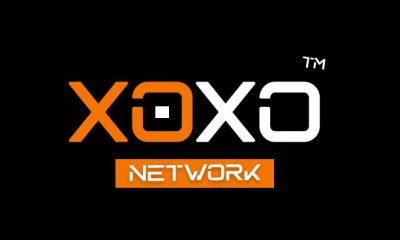Qlink QLC: Decentralized Mobile Telecom Blockchain Network?
Qlink claims to be the world’s first decentralized mobile network. Find out how it plans to disrupt the telecom industry today in our review.
What Is Qlink?
Qlink is a decentralized mobile network aiming to build an open source, blockchain-based telecommunications infrastructure.
The project is in development by a Hong Kong-based team.
The goal of Qlink is to create a decentralized P2P Wi-Fi sharing network that offers higher security and better mobile data services. The project involves crowd-sourced base stations, enterprise telecom services, and other projects.
Qlink aims to enhance security and lower costs in the global telecommunications industry by making it easier for users to “share” their telecommunications infrastructure. Users can share their data using Qlink BaseStations, then receive Qlink tokens in exchange.
With that in mind, let’s take a look at how Qlink works.
How Qlink Mobile Telecom Blockchain Network Works
The goal of Qlink is to build the world’s first decentralized mobile network.
What exactly is a “decentralized mobile network”? A decentralized mobile network basically puts the services of a telecom company into the hands of users. The users run network nodes, for example, and base stations that power the telecom network.
Qlink has four major goals:
- To create a decentralized P2P Wi-Fi sharing network and achieve ultimate security
- To build a decentralized mobile network-based content distribution platform and enable flexible data usage plan
- To provide enterprise telecom services
- To develop crowd-sourcing base stations
The end result is that users enjoy a more secure and cost-efficient telecommunications experience.
Why would users provide free data services to the Qlink network? The Qlink network rewards users with QLC tokens in exchange for sharing their Wi-Fi hotspots. Users deploy Qlink BaseStations that support the LTE-U protocol. The Qlink BaseStations also support PoW and PoS consensus algorithm mining.
Basically, the base stations allow users to become a part of the crypto-economy, while at the same time creating a decentralized solution that covers black spots in the network.
Qlink can also be used to create a decentralized billing system where users can purchase mobile data for content distribution. There are also decentralized E2P SMS services where users can sell unused SMS to enterprise clients.
Qlink uses the blockchain to assign digital identities to telecom assets. The system repackages those assets, then records the usage footprint of each asset to a distributed ledger. In addition, Qlink aims to launch applications that allow peer-to-peer sharing of assets, including Wi-Fi, mobile data access, and enterprise-to-peer SMS.
The ecosystem relies on the QLC token, or Qlink token, for all transactions. It’s the utility token used to settle every transaction on the Qlink network. It functions as a cryptocurrency to measure the value of assets and content. Qlink tokens were issued starting in November 2017.
There are multiple core parts of the Qlink ecosystem. The network core layer is the blockchain, which includes a Public Chain and the Qlink Chain:
Public Chain:
This chain is used to register telecom assets and assign them a digital identity. The digital identity is the unique information used to represent a telecom asset on the Qlink network. Qlink uses the NEO blockchain to register telecom assets.
Qlink Chain:
The Qlink Chain has two primary functions. It keeps a record of transactions between asset owners and users on a ledger. It also deploys and executes smart contracts. Qlink smart contracts are algorithmic contracts deployed between users and telecom assets. The smart contract defines trading rules, then automatically executes transactions through code.
The end result of all of these systems is this: let’s say your neighbor wants to use your Wi-Fi. Your neighbor agrees to pay a reward – in QLC tokens – to you – the Wi-Fi owner – based on the length of time the neighbor will be connected to the Wi-Fi. These trading terms are written into a smart contract, then executed automatically through the Qlink platform with no manual intervention.
Users interact with the Qlink ecosystem through a mobile app and a desktop app.
What Problems Does Qlink Seek To Solve?
Qlink sees major problems with today’s telecommunication industry. Today, there are more than 2,000 mobile network operators worldwide, each of which provides communication services through inflexible centralized infrastructure. These centralized services include Wi-Fi, 3G and 4G network facilities, and mobile communication billing and operations support systems (BOSS), as well as cloud-based communication service providers.
Because these systems are centralized and inflexible, they struggle to provide adequate service to customers. These systems have difficulty providing accurate content distribution and billing, for example. They also have expensive usage-based fees. Operators overcharge customers, and customers are faced with security issues during data transmission.
How Do Qlink QLC Tokens Work?
There’s a total supply of 600,000,000 Qlink tokens, or QLC. All 600,000,000 tokens were created during the token sale, with no further tokens being created in the future.
QLC tokens are used to pay for Wi-Fi access, mobile data access, E2P SMS packages, and to register content on the Qlink Chain. They’re also used to reward users for viewing sponsored content.
Users can acquire QLC tokens in exchange for using the Qlink BaseStation to contribute to the network through mining.
A token sale for Qlink took place from October to November 2017.
Who’s Behind Qlink?
Qlink was founded by Allen Li, a serial entrepreneur with 7 years of experience at Huawei Technologies and 4 years of experience as the founder and CEO of Youyou Mobile. Allen founded Qlink in 2017. Today, the company is headquartered in Hong Kong.
The rest of the company, according to the whitepaper, consists of “a team of seasoned telecom and blockchain developers, along with experienced business and marketing professionals.” Key members of the team include Wang Peng (Senior Developer), and Zhao Zhijie (Senior Developer).
Qlink Conclusion
Qlink plans to launch its full-featured platform, including the Qlink BaseStation hardware, before the end of Q4 2018.
To learn more about Qlink, visit online today at Qlink.mobi. The company is seeking to disrupt the global telecommunications industry, lowing costs and enhancing security for users around the world.














